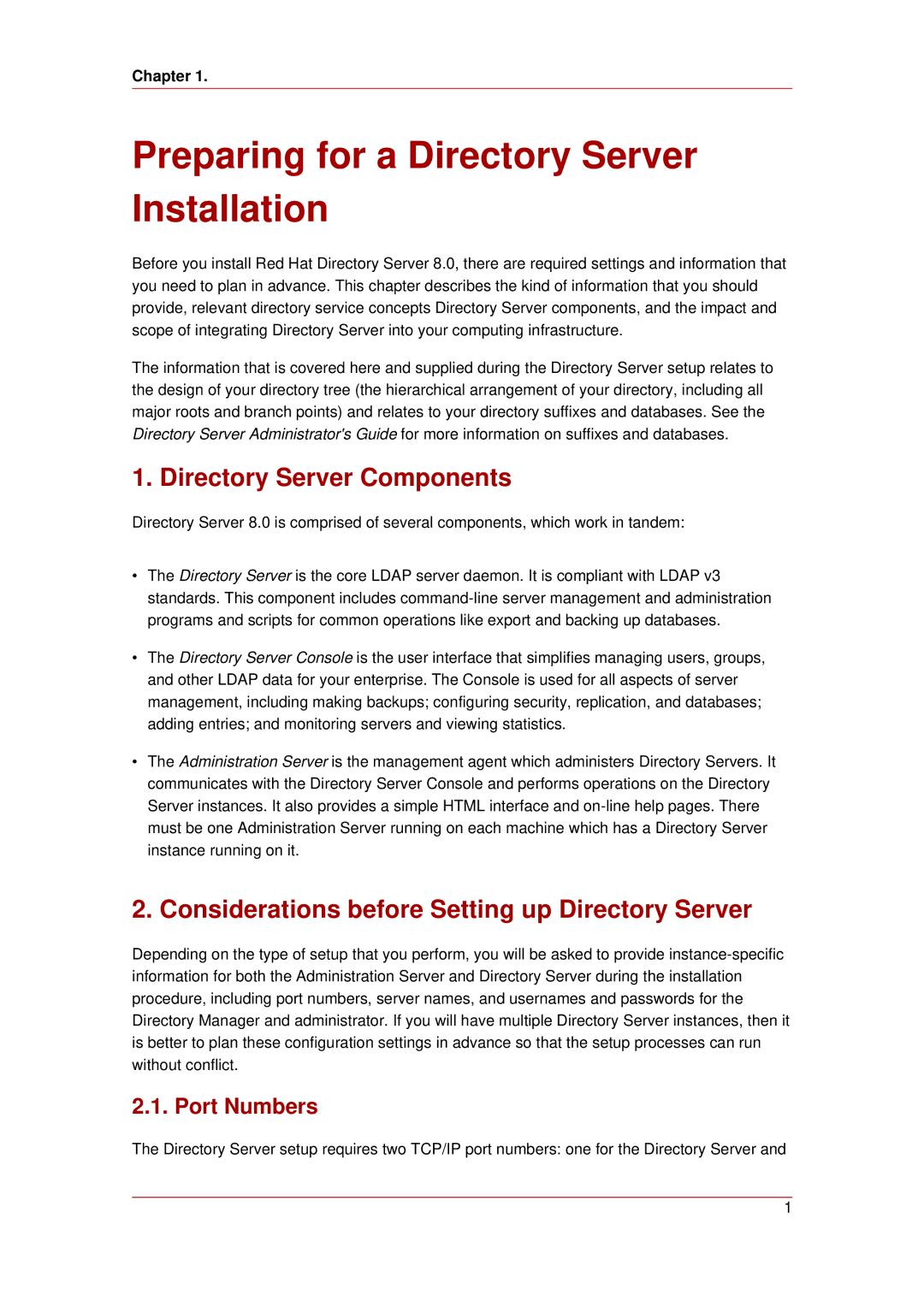
Chapter 1.
Preparing for a Directory Server Installation
Before you install Red Hat Directory Server 8.0, there are required settings and information that you need to plan in advance. This chapter describes the kind of information that you should provide, relevant directory service concepts Directory Server components, and the impact and scope of integrating Directory Server into your computing infrastructure.
The information that is covered here and supplied during the Directory Server setup relates to the design of your directory tree (the hierarchical arrangement of your directory, including all major roots and branch points) and relates to your directory suffixes and databases. See the Directory Server Administrator's Guide for more information on suffixes and databases.
1. Directory Server Components
Directory Server 8.0 is comprised of several components, which work in tandem:
•The Directory Server is the core LDAP server daemon. It is compliant with LDAP v3 standards. This component includes
•The Directory Server Console is the user interface that simplifies managing users, groups, and other LDAP data for your enterprise. The Console is used for all aspects of server management, including making backups; configuring security, replication, and databases; adding entries; and monitoring servers and viewing statistics.
•The Administration Server is the management agent which administers Directory Servers. It communicates with the Directory Server Console and performs operations on the Directory Server instances. It also provides a simple HTML interface and
2. Considerations before Setting up Directory Server
Depending on the type of setup that you perform, you will be asked to provide
2.1. Port Numbers
The Directory Server setup requires two TCP/IP port numbers: one for the Directory Server and
1
